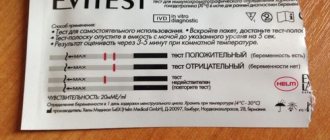causes
During your menstrual cycle, your uterus contracts to help push out its lining. Hormonal substances (prostaglandins) involved in pain and inflammation cause the muscles of the uterus to contract. Higher levels of prostaglandins are associated with more severe menstrual cramps.
Menstrual cramps can be caused by:
- Endometriosis. The tissue that builds your uterus is implanted outside of your uterus, most often on your fallopian tubes, ovaries, or the tissue lining your pelvis.
- Uterine fibroids. These non-tumor growths in the wall of the uterus can cause pain.
- Adenomyosis. The tissue that builds your uterus begins to grow into the muscular walls of the uterus.
- Pelvic inflammatory disease. This infection of the female reproductive organs is usually caused by sexually transmitted bacteria.
- Cervical stenosis. In some women, the opening of the cervix is small enough to impede menstrual flow, causing a painful increase in pressure inside the uterus.
Can your legs hurt during your period?
Patients of different ages experience pain in the lower extremities during menstruation. People come to gynecologists with complaints:
- mothers with daughters during puberty of girls,
- women of reproductive age
- women during premenopausal changes.
Unpleasant sensations arise due to changes in hormonal levels. Some women have mild pain in their legs, others complain that they cannot walk because of the pain; they feel it even during a period of rest.
complications
Menstrual cramps do not cause other medical complications, but they can interfere with school, work, and social activities.
However, some conditions associated with menstrual cramps can have complications. For example, endometriosis can cause fertility problems. Pelvic inflammatory disease can damage your fallopian tubes, increasing the risk of a fertilized egg implanting outside your uterus (ectopic pregnancy).
Conditions such as endometriosis or uterine fibroids can cause menstrual cramps. Treating the cause is the key to reducing pain. Menstrual cramps that are not caused by another condition tend to decrease with age and often improve after birth.
Herbal therapy
There are several plants that can relieve muscle tone of the uterus and other organs.
Viburnum will help relieve uterine spasms. It has antispasmodic properties. Infusions from this plant can weaken and completely remove cramps, pain during menstruation, and also relax the nervous system.
Infusions and decoctions of ginger help improve blood circulation. Because of this, spasms are relieved.
This plant also improves blood circulation. It's very easy to find. Gruels, infusions and decoctions are prepared from it.
This is a very common and famous plant. It has antispasmodic properties and a calming effect.
The uterus is an organ whose wall has a muscular layer.
It has contractility.
Spasms in the uterus are caused by contraction of muscle fibers.
They can occur for both physiological and pathological reasons.
Spasm of the uterine muscles does not always indicate illness.
Obviously, since this organ has a muscle layer, it must contract from time to time.
Another thing is that these contractions can be quite unpleasant.
Therefore, having felt this symptom, you should figure out whether the woman’s condition is normal, or whether the appearance of the spasm is due to a disease of the reproductive system.
symptoms
Symptoms of menstrual cramps include:
- Throbbing or cramping pain in the lower abdomen that may be intense
- Pain that begins 1 to 3 days before your period, peaks 24 hours after the start of your period, and decreases by 2 to 3 days
- Dull, continuous pain
- Pain that radiates from your lower back and hips
Some women also have:
- Nausea
- Loose stools
- Headache
- Dizziness
When to see a doctor
If menstrual cramps are disrupting your life every month, if your symptoms are gradually getting worse, or if you just started having serious menstrual cramps after age 25, see your doctor.
diagnostics
Your doctor will review your medical history and perform a physical examination, including a pelvic exam. During a pelvic exam, your doctor will check for abnormalities in your reproductive organs and look for signs of infection.
If your doctor suspects a disorder is causing your menstrual cramps, he or she may recommend other tests, such as:
- Ultrasound. This test uses sound waves to create an image of your uterus, cervix, fallopian tubes, and ovaries.
- Other image tests. A CT scan or MRI scan provides more detailed information than an ultrasound and can help your doctor diagnose underlying conditions.
CT combines X-rays taken from many angles to produce cross-sectional images of bones, organs and other soft tissues inside your body. MRI uses radio waves and a powerful magnetic field to produce detailed images of internal structures. Both tests are non-invasive and painless. - Laparoscopy. Although it is not usually necessary to diagnose menstrual cramps, laparoscopy can help identify an underlying condition such as endometriosis, adhesions, fibroids, ovarian cysts, and ectopic pregnancies. During this outpatient surgery, your doctor examines your abdomen and reproductive organs by making tiny incisions in your abdomen and inserting a fiber-optic tube with a small camera lens.
Fibroids rejection
A benign pedunculated tumor growing inside the uterus can spontaneously be rejected.
Provoking factors
The main reason is considered to be: spontaneous detachment of the tumor, which occurs in a number of cases:
- when jumping from a great height;
- abdominal bruises;
- overstrain of the abdominal wall.
Detachment is possible only for small tumor formations. The risk of spontaneous fibroid rejection increases during menstruation.
Signs
When fibroids are “born,” pain appears during menstruation, like contractions, and then the volume of bloody discharge from the vagina increases.
Rejection of a fibroid node is similar in symptoms to a miscarriage, but the process ends with the release of a homogeneous formation.
After self-removal of the tumor, the cramping pains lose intensity and gradually disappear, and the volume of bloody discharge decreases. If the bleeding does not decrease, this may indicate damage to the blood vessels inside the uterus or internal ruptures.
Treatment
Regardless of the outcome of the expulsion of the fibroid formation: the node has come out and the contractions have stopped, or the process is actively continuing, the woman must be hospitalized. In this case, the “born” neoplasm is also taken for subsequent cytological examination.
In a hospital setting, an ultrasound scan of the uterus is performed and the size of the detached tumor is determined - the treatment tactics depend on this. After obtaining the necessary information, the fibroids are removed under local anesthesia and the uterus is inspected .
For bleeding from large vessels that cannot be stopped by curettage or cauterization, surgery is indicated.
If the node has already come out and there is bloody discharge, as during menstruation or after childbirth, then the patient is left under observation and the examination is carried out as planned.
Who will help
The necessary assistance will be provided by doctors in the gynecological surgery department.
treatment
To help relieve your menstrual cramps, your doctor may recommend:
- Painkillers. Over-the-counter pain relievers such as ibuprofen (Advil, Motrin IB, others) or naproxen sodium (Aleve), in regular doses starting the day before you expect your period to start, will help manage the pain of cramps.
Prescription nonsteroidal anti-inflammatory drugs are also available. Start taking a pain reliever at the beginning of your period or as soon as you feel symptoms, and continue taking the medicine as directed for two to three days, or until your symptoms go away. - Hormonal birth control. Oral birth control pills contain hormones that prevent ovulation and reduce the severity of menstrual cramps. These hormones can also be delivered in several other forms: injections, skin patches, an implant placed under the skin of your arm, a flexible ring that you insert into your vagina, or an intrauterine device (IUD).
- Surgery. If your menstrual cramps are caused by a disorder such as endometriosis or fibroids, surgery to correct the problem may help your symptoms. Surgical removal of the uterus may also be an option if other approaches fail to relieve your symptoms and if you do not plan to have children.
Lifestyle and Home Remedies
In addition to getting enough sleep and rest, you can try:
Use heat. Soaking in a hot bath or using a heating pad, hot water bottle, or heat application on the lower abdomen can relieve menstrual cramps.
Pain in the lower abdomen
Severe colic during menstruation is caused by a number of gynecological problems. Let's look at the most common ones in more detail:
The list of gynecological problems does not end there. To maintain normal health, a woman should be examined by a gynecologist at least once every six months.
Alternative medicine
Most alternative treatments for menstrual cramps have not been studied enough by experts to recommend them. However, some alternative treatments may help, including:
- Acupuncture. Acupuncture involves inserting very thin needles through the skin at strategic points on your body. Some studies have found that acupuncture helps reduce menstrual cramps.
- Transcutaneous electrical nerve stimulation (TENS). The TENS device connects to the skin using adhesive patches with electrodes.
The electrodes provide varying levels of electrical current to stimulate the nerves. TENS can work by raising your pain threshold and stimulating the release of your body's natural painkillers (endorphins). In studies, TENS was more effective than placebo in reducing menstrual cramping pain. - Phytotherapy. Some herbal products, such as pycnogenol, fennel, or combination products, may provide some relief from menstrual cramps.
- Acupressure. Similar to acupuncture, acupressure also involves stimulating specific points on the body, but with gentle pressure on the skin rather than needles. Although research on acupressure and menstrual cramps is limited, it appears that acupressure may be more effective than placebo in relieving menstrual cramps.
Preparing for your appointment
If you have bothersome menstrual cramps, make an appointment with your primary care doctor or a doctor who specializes in the female reproductive system (gynecologist). Here's some information to help you prepare for your meeting.
What can you do
Keep track of your menstrual periods, when they start and how severe the cramps are. Also, make a list:
- Medical problems you have had and recent major stresses in your life
- Any medications, vitamins, or other supplements you take
- Questions to ask your doctor
For menstrual cramps, the main questions are:
- What is the most likely cause of my symptoms?
- Can my symptoms change over time?
- Are any tests needed?
- What treatments or home remedies may help?
- Are there brochures or other printed material that I have? What sites do you recommend?
Feel free to ask other questions as they arise.
What to expect from your doctor
Your doctor may ask you questions, such as:
- How old were you when you started menstruating?
- How far apart are your menstrual periods and how long do they usually last?
- How heavy is your menstrual bleeding? Have you ever bled between periods?
- Where do your cramps hurt?
- Do you have other symptoms with your cramps, such as nausea, vomiting, diarrhea, back pain, dizziness or headaches?
- Do you have symptoms such that you may limit your activities, stay home from work or school, or avoid exercise?
- If you are sexually active, is intercourse painful?
- What treatments have you tried so far, if any? Did anything help?
- Do women in your family have similar symptoms?
What can you do during this time?
When you experience cramps, try taking a warm bath or applying a heating pad, hot water bottle, or heat patch to your stomach. Over-the-counter pain relievers such as ibuprofen may also help.
Share link:
- Click to share on Twitter (Opens in new window)
- Click here to share content on Facebook. (Opens in a new window)
- Click to share on Telegram (Opens in new window)
Liked this:
Like
Similar
Why do my legs hurt during menstruation?
It will be possible to find out the reasons why your legs hurt during menstruation after a comprehensive examination. The appearance of painful sensations can be caused by physiological or pathological reasons. To establish the exact cause, it is necessary to check the reproductive organs, blood vessels, joints, and determine if there are any problems with the spine or inflammation. Legs may hurt after childbirth or surgery.
Physiological causes of leg pain before menstruation
Patients with severe premenstrual syndrome often come to gynecologists with complaints that their legs drag during menstruation. The doctor has the right to assume that the appearance of pain is caused by PMS if, during the interview, it turns out that before the woman’s period:
- irritability increases,
- appetite increases,
- taste preferences change,
- swelling becomes visible.
Important! Physiological pain is caused by tissue stretching, which arose due to swelling of the limbs.
Under the influence of hormones, the veins of the legs expand, this leads to a feeling of heaviness and distension.
During the period of preparation for menstruation, the body actively produces prostaglandins necessary for the contraction of the myometrium. Their concentration in the blood increases, blood vessels spasm, and ischemic conditions develop. Hemodynamic barriers are broken, oxygen starvation develops in the cells, so pain increases.









